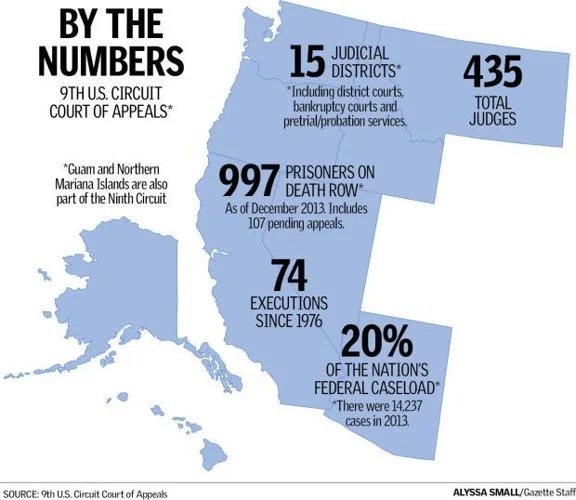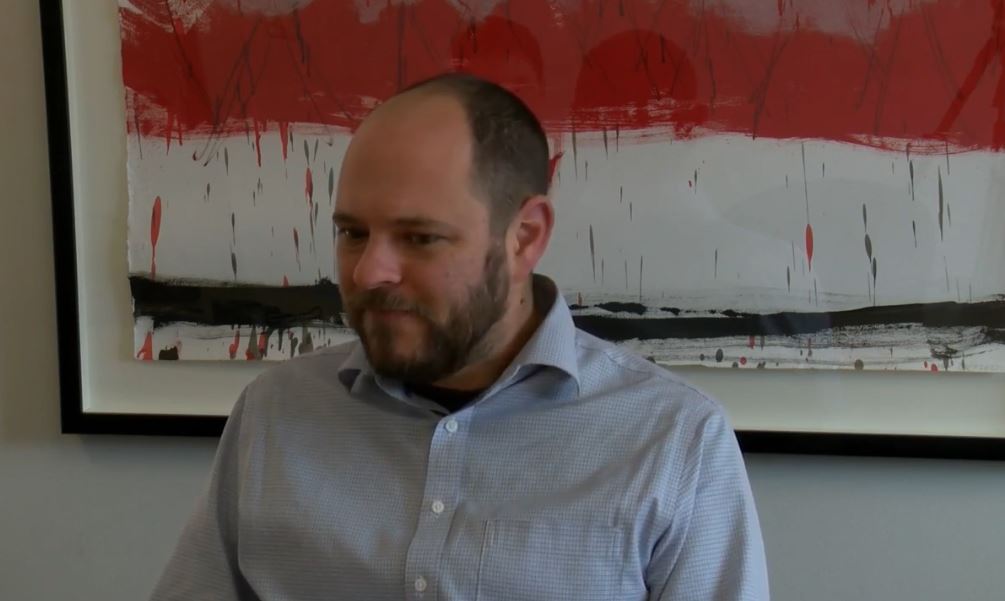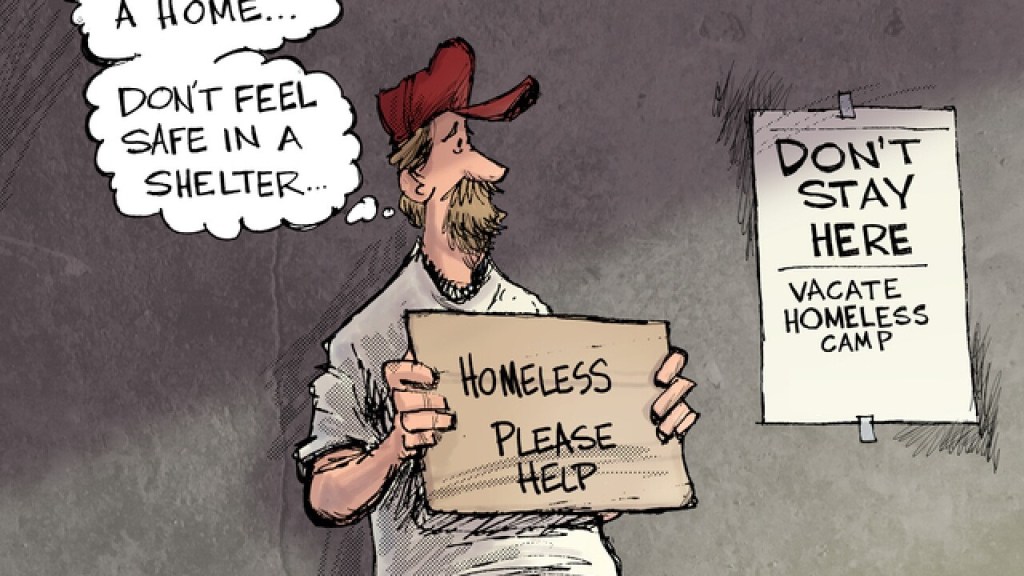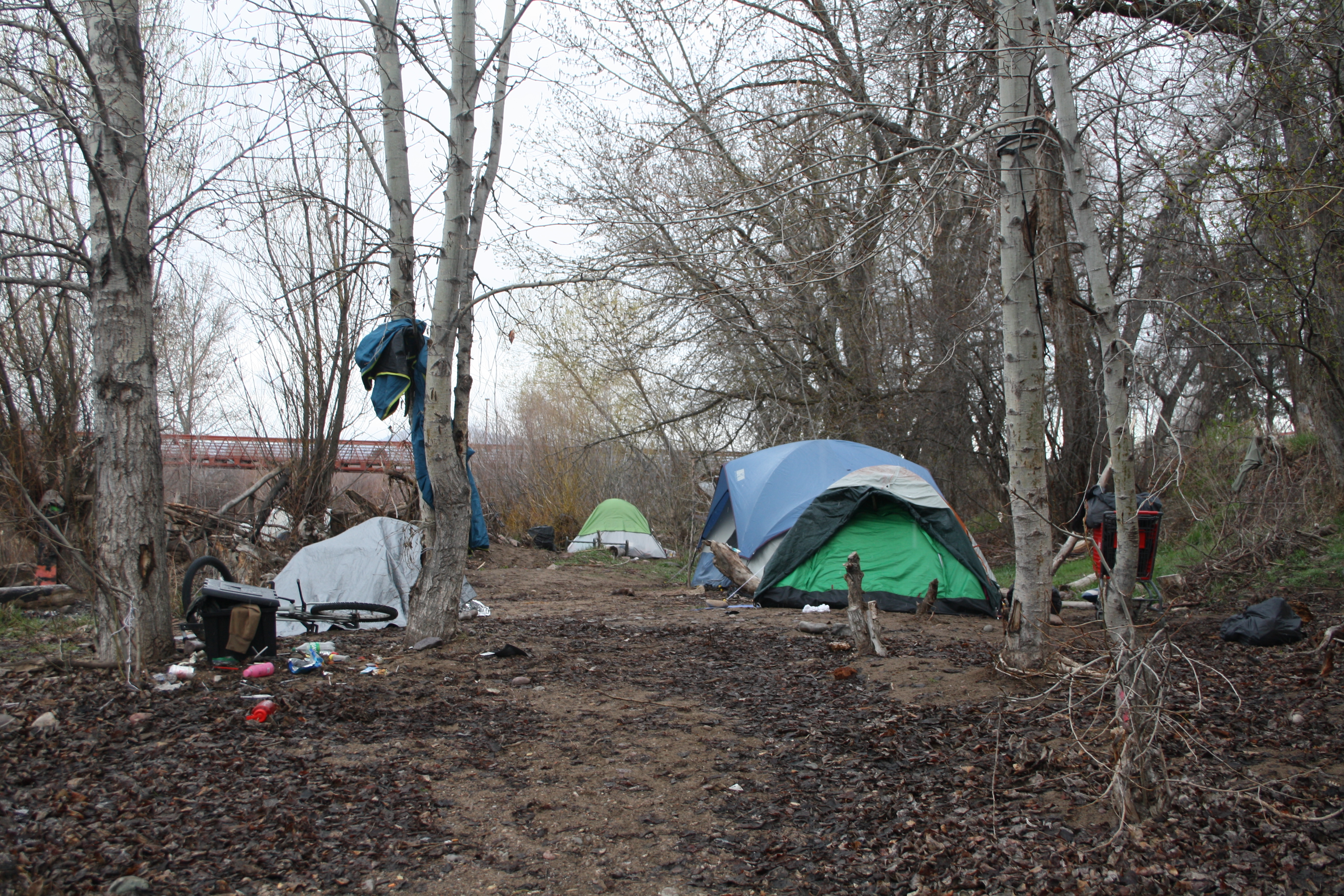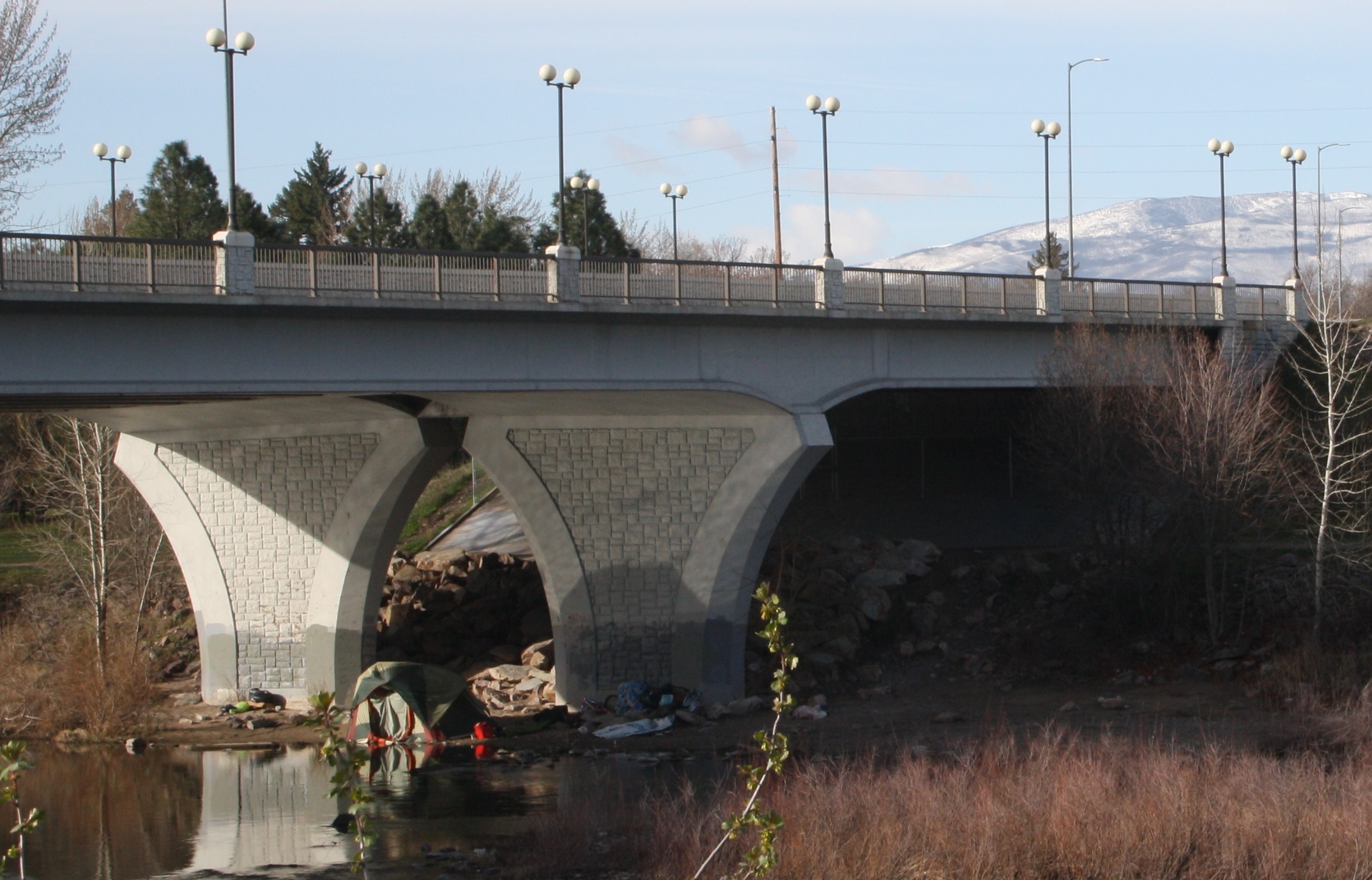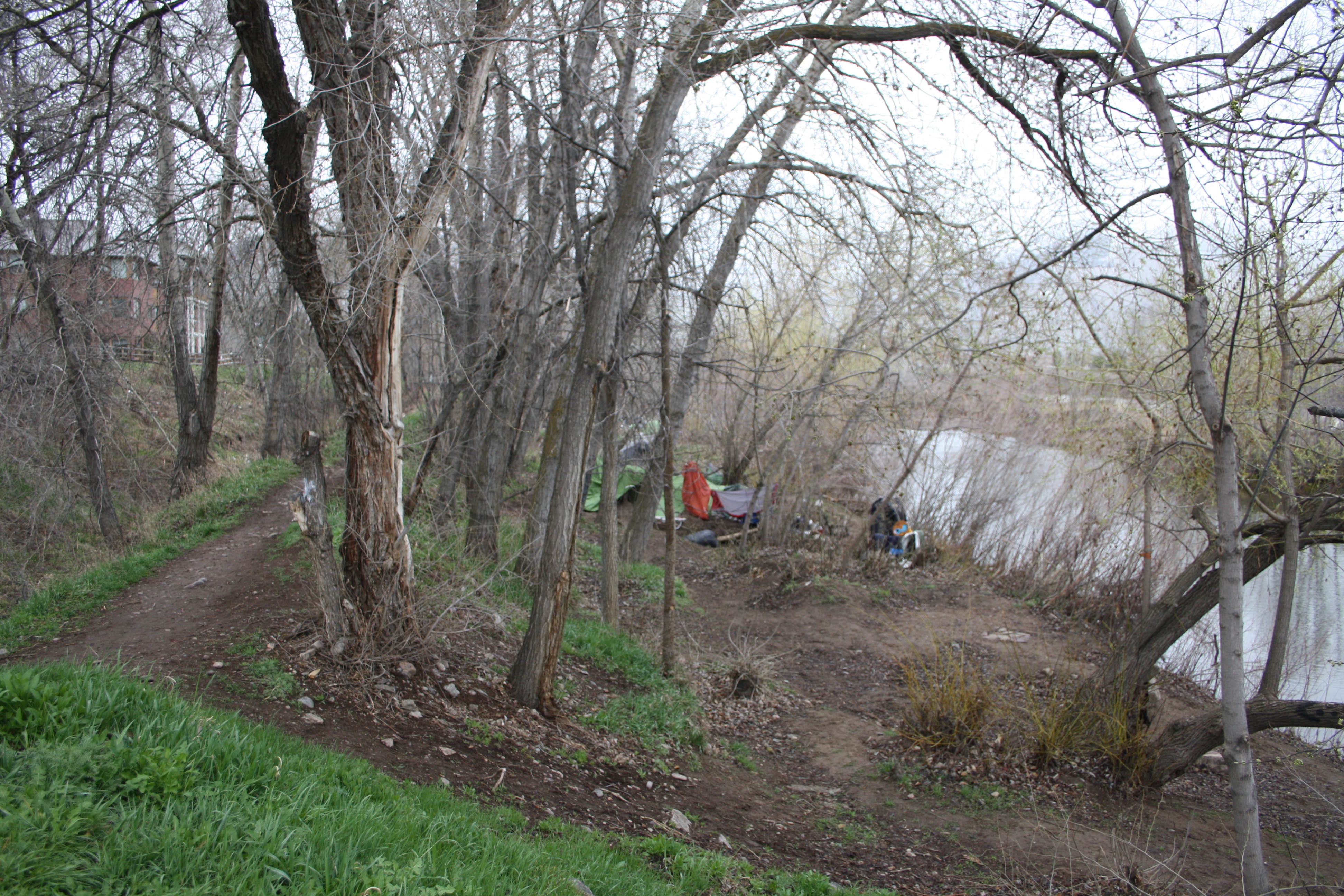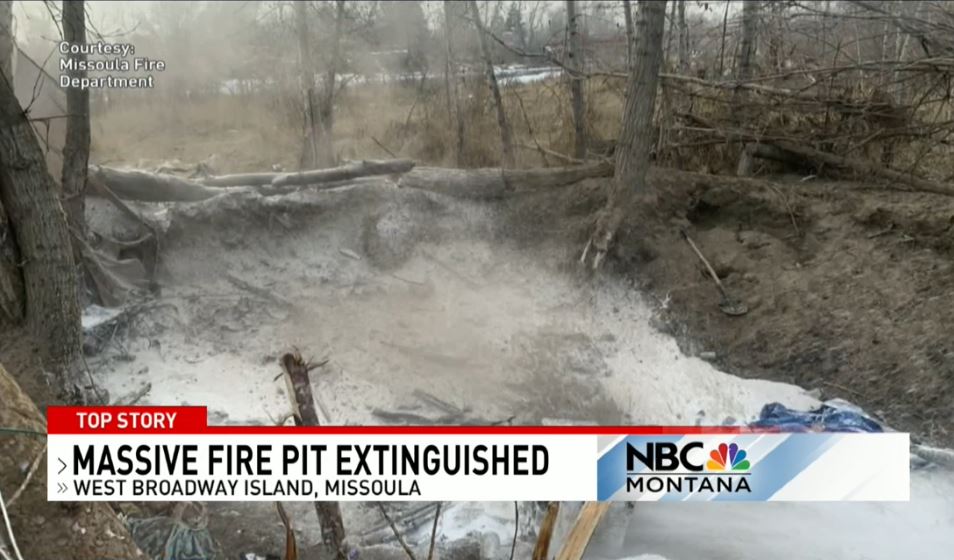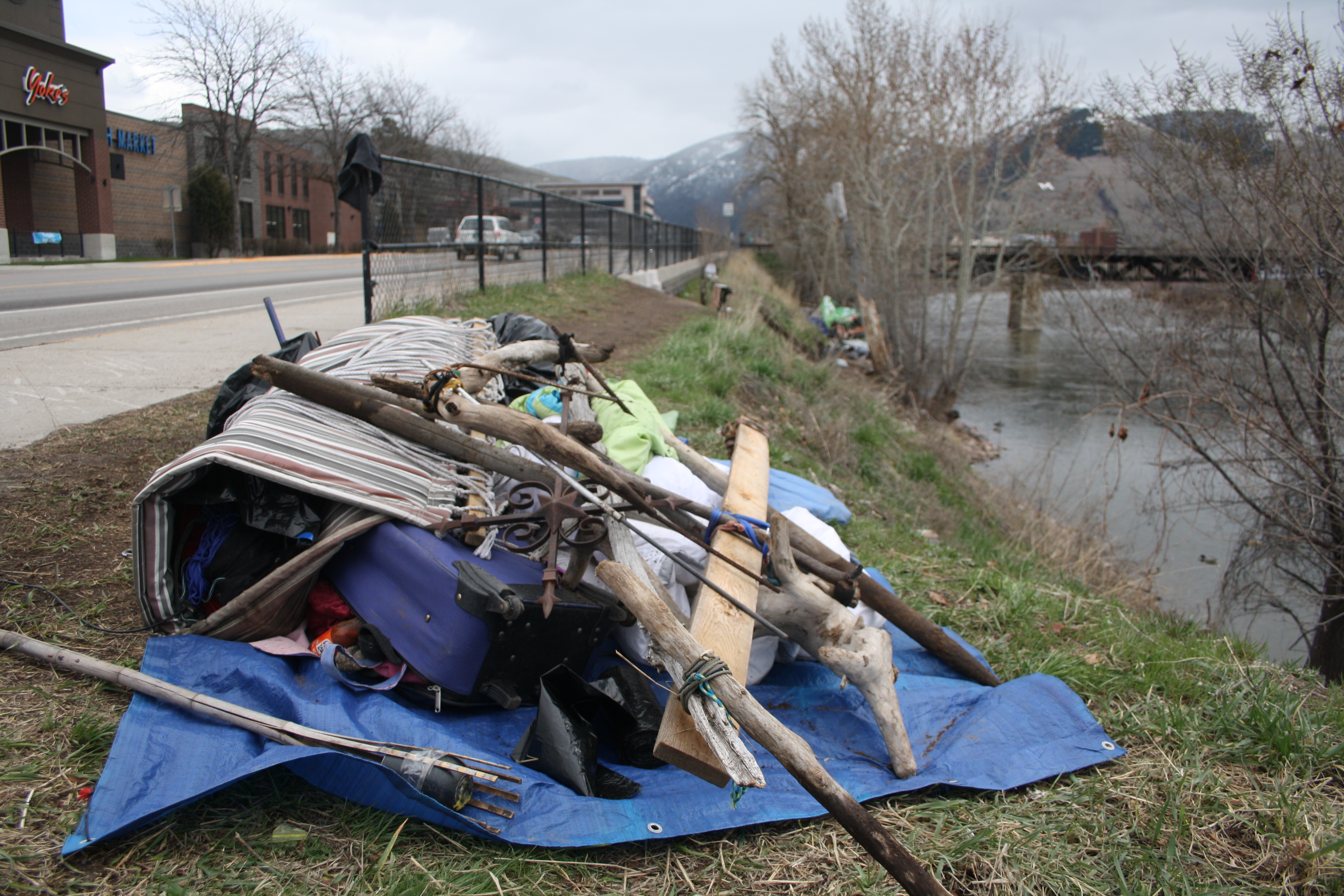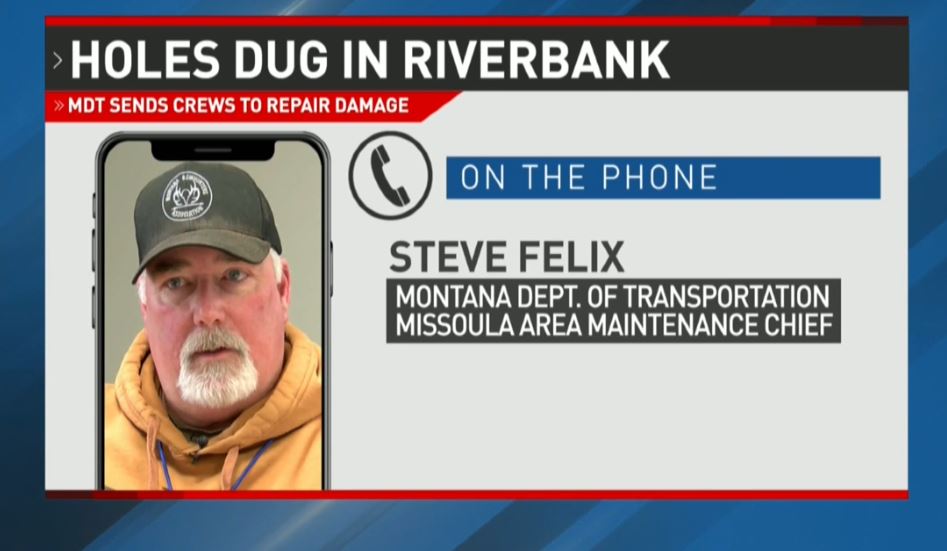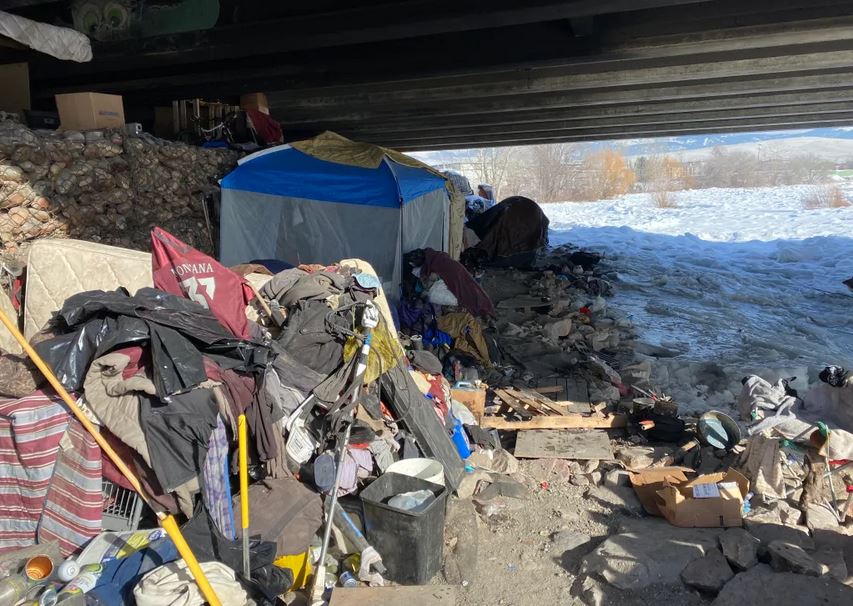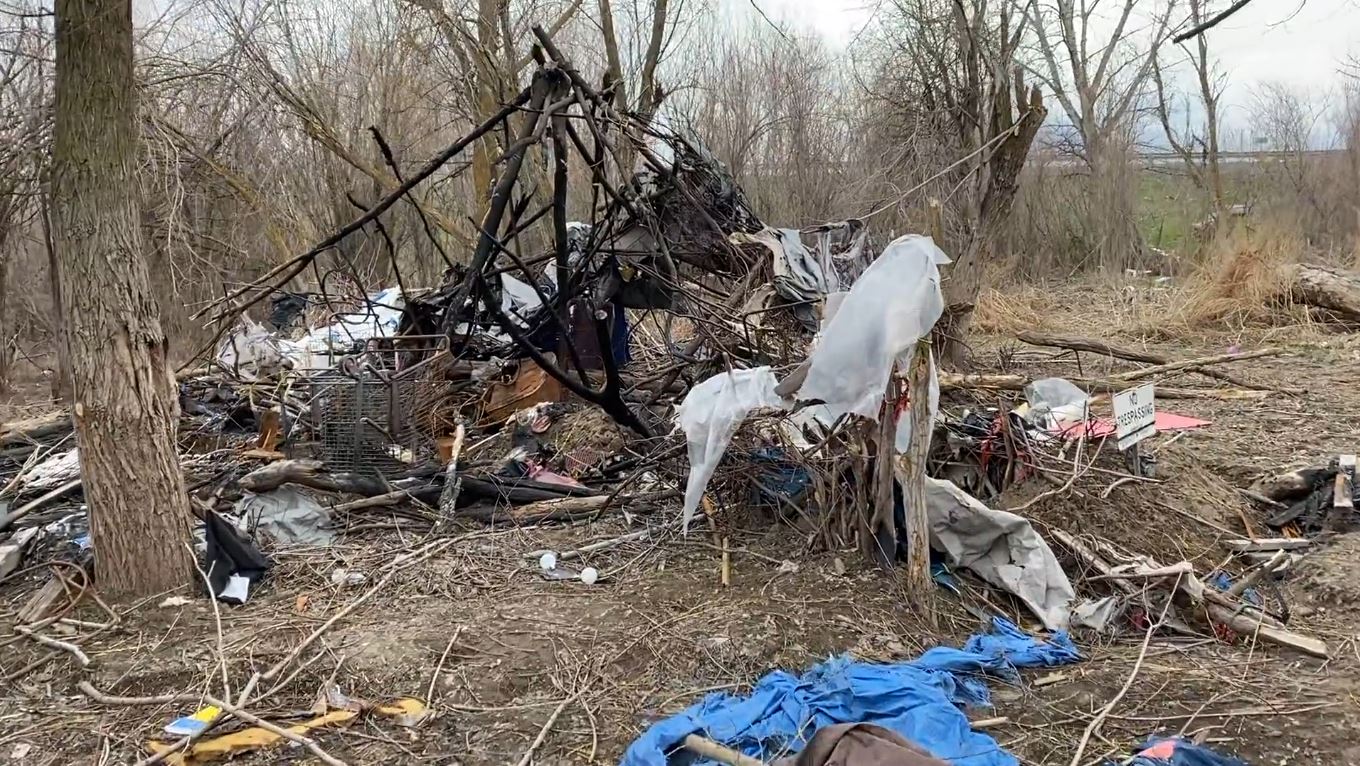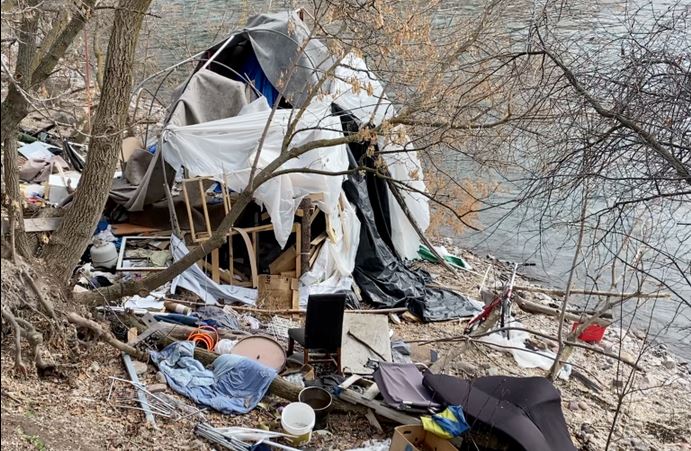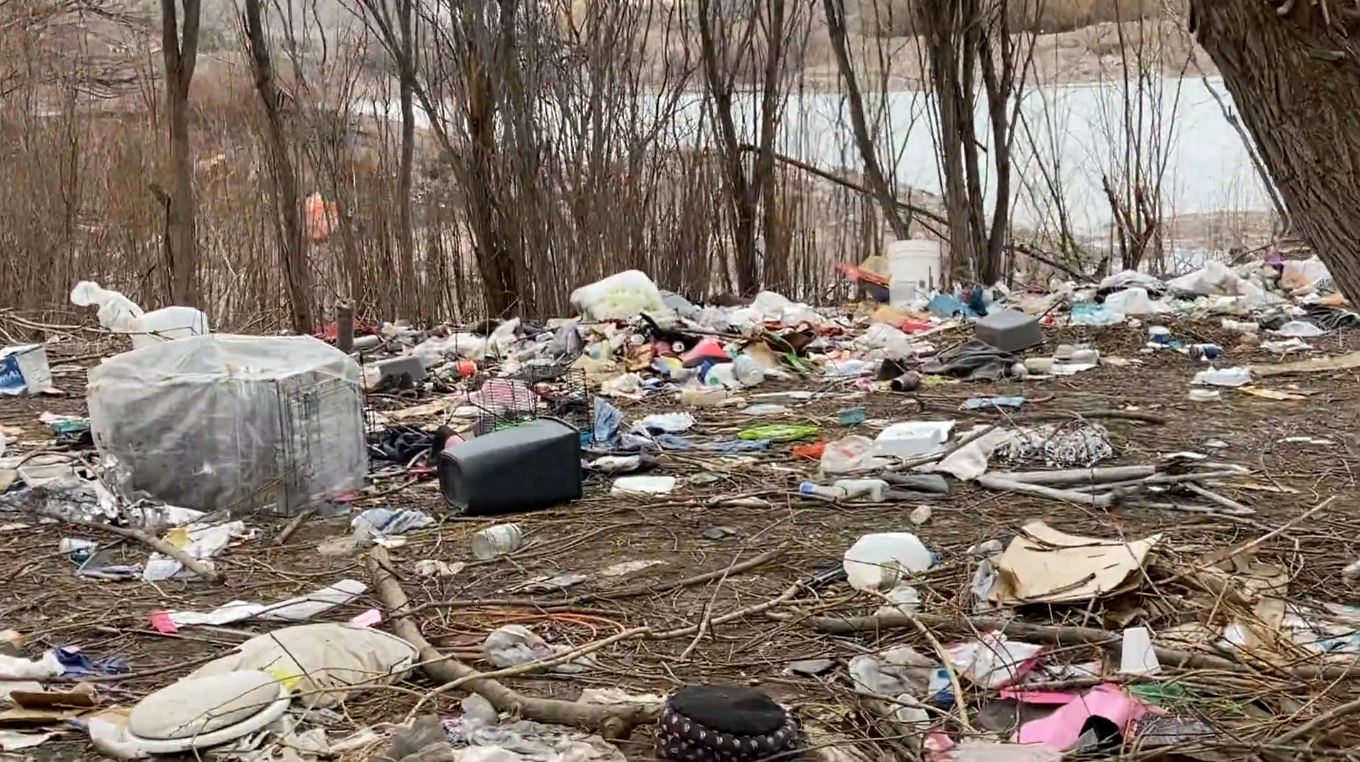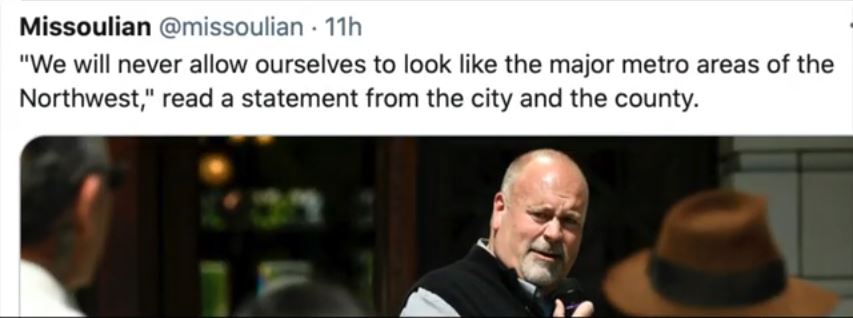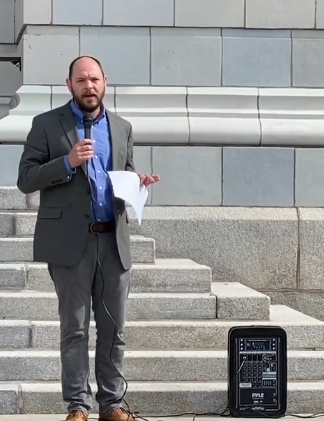What transformed the formerly safe neighborhoods of the American west into the post-apocalyptic bazaars of meth, trafficking and murder they are today? Within less than a decade tent cities rapidly emerged from public parks and sidewalks and grew into shantytowns and Hoovervilles like the ghastly disgrace called “the Zone” in Phoenix, Arizona. Over the past five years, these symptoms of societal decay have grown visibly worse. In the face of this humanitarian crisis, many public officials have made an institutional commitment to ignoring the problem, claiming that their hands have been tied by a decision made by the Ninth Circuit Court of Appeals in 2018. This technocratic abdication of duty is not only legally inappropriate, it normalizes a sadistic indifference toward human suffering that dramatically accelerates the urban decay of the American west. After a five-year long headache, this colossal policy failure now lies before the US Supreme Court for reconsideration.
Timothy Sandefur of the Goldwater Institute writes:
“Five years ago, the Ninth Circuit Court of Appeals decided a case called Martin v. City of Boise that radically transformed how local governments address the problem of homelessness and vastly worsened the nation’s homelessness crisis. Now, the Supreme Court is poised to consider whether to overrule that decision—and a subsequent decision called Johnson v. Grants Pass.”
Both Martin and Johnson proclaimed that it is unconstitutional to enforce anti-vagrancy laws unless there are adequate shelter beds available for homeless persons. These lawsuits rely on a ruling from the 1962 case, Robinson v. California, wherein the Supreme Court held that people cannot legitimately be punished for immutable characteristics; in this case, the immutable characteristic of being “involuntarily homeless” – a term that has yet to be defined.
That argument held sway in the case of Martin v. Boise. This case began after a Boise man named Robert Martin fell asleep on an Idaho park bench and was cited by police for doing so. Martin and five other homeless Boiseans in turn sued the City after being cited for sleeping in public spaces. The decision climbed up the ladder to the Federal Appellate Court who eventually ruled against the City. In that case, a panel of judges from the U.S. Court of Appeals for the Ninth Circuit ruled that punishing homeless persons for sleeping in public violates the Eighth Amendment’s prohibition on “cruel and unusual punishment” if shelters are not available for them. As a result, this ruling conveyed to every western court that the City of Boise had violated the constitutional rights of homeless people by imposing criminal penalties for sleeping and camping outdoors.
The expansion of the Martin ruling began in 2018 when a homeless woman named Debra Blake (alongside fellow plaintiffs John Logan and Gloria Johnson) sued the city of Grants Pass, Oregon in federal court for similar reasons. “The city of Grants Pass is trying to run homeless people out of town,” the lawsuit stated. “On any given day or night, hundreds of individuals in Grants Pass, Oregon, are forced to live outside due to the lack of emergency shelter and affordable housing in their community.” The Ninth Circuit ruled in favor of the plaintiffs, citing Martin v Boise as precedent.
These rulings were meant to reiterate that people have an inherent right to exist in public spaces. Martin established that municipalities cannot criminalize people for sleeping in public and Grants Pass ultimately reiterated the human need for insulation against the elements.
Lazy bureaucrats have twisted these legal decisions into the end-all absolution from municipal responsibilities. Duly-unelected interim-mayor Jordan Hess demonstrated this point perfectly in his County Courthouse Address on 26 April 2023:
“We don’t have – the reality is that we do not have enough indoor shelter in our community for everybody. … Uh, cities across the west have, of course, seen a high increase to the cost of living and the cost of housing as, um, these – as our desirable communities have become destinations for, uh, for people moving into our communities. …
“Municipalities cannot criminalize homelessness, uh, nor can we ticket nor arrest or remove people who are camping in public places because there are no shelter beds, um, because there are no shelter beds for them. So since we don’t have, uh, shelter beds we cannot remove, uh, someone from an encampment, um, in a public space.”
Hess strategically actuates the predictable “criminalizing homelessness” strawman. Relying on public ignorance, lazy bureaucrats ladle out helpings of such logical fallacies frequently and generously. In this case, Jordan relies on the intentionally misrepresented proposition of “criminalizing homelessness” because such fallacies are easier to defeat than the real arguments concerning the actual issues like addiction, mental illness, and financial collapse. Hence “attacking a strawman”.
Arizona Judge Freddy Brown expounds on the folly of “criminalizing homelessness”:
“Martin’s presumption of helplessness is also manifested in such rhetorical tricks as the Respondents engage in when they accuse Petitioners of “criminalizing homelessness.” This is a semantic device intended to substitute intimidation and accusation in place of rational legal analysis. It’s safe to say that no party or amicus in this case seeks to criminalize homelessness. Rather, the laws in question are laws against sleeping in public parks, polluting public areas, and other acts which are voluntary, at least in the vast majority of cases, and that the exceptions can only be discerned on a case-by-case basis.”
Despite what lazy officials and mayoral liars may allege, City governments can still enforce anti-camping ordinances. But Martin’s bizarre application of the concept of “involuntary homelessness” has created a legally unworkable situation that combines a lack of shelter beds alongside a declaration of “involuntariness” that then entitles a person to reside indefinitely in public spaces—while completely exempt from law enforcement intervention as a matter of constitutional entitlement.
“At least that’s how many municipal officials interpret Martin. Notwithstanding the caveats in that case, such officials have taken Martin’s bizarre “involuntariness” theory as an opportunity to shrug off their responsibility to enforce laws that are wholesome and necessary for the public good. The result is a stark homelessness crisis in cities across the west.”
Since the Ninth Circuit enjoys jurisdiction over the entire American West from Arizona to Washington and even Alaska and Hawaii, their rulings set precedent for all lower courts of nine western States, including Montana.
With Grants Pass up for review before the US Supreme Court, the city attorneys from that case point out the obvious effects of this ludicrous policy in a separate brief:
“This Court can see the track record under Martin in the Ninth Circuit — sprawling encampments, rising deaths, and widespread harms to the community, as localities are forced to surrender their public spaces.”
Timothy Sandefur’s amicus brief elucidates on this observation:
“One need only look at the multitude of dangerous and dehumanizing homeless encampments and open-air drug markets in cities under the jurisdiction of the Ninth Circuit—such as the Zone in Phoenix—to see the profound impact that Martin and Grants Pass have had. … And the decisions also provide a convenient excuse for other city leaders that wish to do nothing while such encampments grow and fester.”
In January the Supremes agreed to hear an appeal from the City of Grants Pass of the 2022 ruling by the Ninth Circuit that expanded the 2018 Martin ruling. As Bob Egelko of the San Francisco Chronicle reported in January:
“The U.S. Supreme Court agreed Friday to hear a case that could dramatically reshape how cities across the West respond to the homelessness crisis. Gov. Gavin Newsom, governments in 20 other states and organizations of cities and counties had asked the court to review and overturn a September 2022 decision by the 9th U.S. Circuit Court of Appeals that prohibited local governments from sweeping homeless encampments unless shelter was available for the camp’s residents.” …
“Families can no longer walk the streets of Portland, San Francisco, and Seattle in safety,” said lawyers for the 20 states, led by Idaho and Montana.
Writing for Planetizen, Irvin Dawid clarifies that the appeal was filed under “Grants Pass” even though the case that originally created this monstrous precedent was Martin v. Boise:
“Now that the Supreme Court has agreed to hear the appeal, the case goes by title, City of Grants Pass v. Johnson. Note that the high court refused to hear an appeal of Martin v. Boise in December 2019. Since the Grants Pass ruling involved precedent set by Martin, consideration of appeal means that both are up for reconsideration.”
MISSOULA RESCUED BY THE STATE OF MONTANA, AGAIN
When Missoula drops the ball on enforcement, the State of Montana must often mop up the mess. Both the $250,000+ Reserve Street shantytown eviction as well as the $20,000 burrows rebuild came out of the State budget because both areas are owned by the Montana Department of Transportation. So while Jordan Hess and other pathetic bureaucrats whine about the State legislature hoarding budgets from Missoula, these overwhelmingly expensive mistakes—made by Missoula ideologues—were paid for by all Montanans.
Why was the State of Montana allowed to do what Hess said couldn’t be done?
Jordan Hess demonstrates a profound misunderstanding of the law when he claims—falsely—that his government wasn’t allowed to protect innocent taxpayers against people who are unable to control their own actions. By this nincompoopery, if a shelter runs out of vacancies then the police and citizens must stand down and watch the town burn.
While the City of Missoula claimed its hands were tied regarding the Clark Fork Colonies proliferating around the Reserve Street Bridge, the State of Montana took legal action against Missoula County to enforce an eviction of 100+ John Does “from accessing, residing on, or otherwise occupying the Property.” The 2022 complaint from the State of Montana addresses factors like health, dangerous fires, improper disposal of waste, the building of permanent structures on land owned by MDT, and vandalism:
“The lawsuit includes five counts including forcible detainer, trespass, a claim for public and private nuisance, a request for injunction and a declaratory action.”
According to the complaint:
“One such health and safety risk involved the continual risk of contamination to the Clark Fork River due to the encampment’s improper waste disposal system and the encampment’s proximity to the river. …
“In Montana, a nuisance is defined as anything that is injurious to health, indecent or offensive to the senses, or an obstruction to the free use of property, so as to interfere with the comfortable enjoyment of life or property, or that unlawfully obstructs the free passage or use, in the customary manner, of any….public park, square, street, or highway.
A similar situation arose this past November when Chinese President Xi Jinping was due to arrive in San Francisco, whereupon California’s Governor Newsom cleaned up his city literally overnight. Presenting a kind of Potemkin Village, the entire downtown was barricaded by miles of black fencing while authorities purged the district of tents, garbage and homeless. Newsom didn’t hide behind the Ninth Circuit decision, admitting that the cleanup was only performed for Xi’s arrival.
By legal precedent, Federal law is supposed to supersede state and local laws, but with several caveats. Since individual states exist within the regional boundaries of the Ninth Federal Circuit District’s jurisdiction, the Martin and Grants Pass decisions are technically binding. But since Federal rulings are not supposed to infringe on states’ rights, decisions can be lawfully challenged and presumptions rebutted.
The State of Montana would seem well within its rights to file a complaint petition, as it did two years ago in the case of the Reserve Street Shantytown. Article IX of the Montana Constitution guarantees that “the state and each person shall maintain and improve a clean and healthful environment in Montana for present and future generations.”
Furthermore, the Ninth Circuit never declared the west was a free-for-all to make encampments wherever anyone desires, nor did it legalize public endangerment, the contamination of public waterways or the degradation of public spaces. Their ruling was narrowly defined. But that hasn’t stopped municipalities like Missoula from twisting the decision into a one-size-fits-all excuse to ignore a profitable catastrophe while redirecting public funds into private partnerships and blaming fallout on those dastardly Republicans at the State Legislature.
Sandefur elaborates:
“The Martin/Grants Pass rule has not only worsened the homelessness problem—by confusing and frustrating city officials who want to do something to clean up their communities and help the unsheltered—but it has also encouraged irresponsible and foolhardy policies that only exacerbate the homelessness crisis. Cities such as Phoenix and San Francisco responded to those precedents by adopting the failed policy known as “Housing First,” which has actually increased homeless populations. And some cities, including Phoenix, took Martin and Grants Pass as handy excuses to do nothing about the homelessness problem—ignoring the laws they’re supposed to enforce, and endangering the hardworking taxpayers who have the right to police protection. We saw the practical consequences of that in The Zone.”
“The idea behind “Housing First” is simple: there will be no more homelessness if everyone has a home. The fault with that logic is that there are many individuals who do not want housing—at least, not at the cost of giving up their addictions—and for that reason choose not to take advantage of available aid.”
Despite what their pushers may allege in the corporate media, so-called “Housing First” policies have overwhelmingly proven themselves a failed strategy in the west. From 2014 to 2020, the States of Oregon, California and Washington all initiated “Housing First” initiatives that resulted, quite ironically, in dramatic increases in homelessness on the streets of their cities.
Liberal mayors in both Missoula and San Francisco committed to ending homelessness within a decade. Missoula’s ten-year plan to end homelessness was called “Reaching Home” and ended in such utter failure that by its conclusion in 2022 none of its former proponents were enthusiastic about its mention.
In the meantime, Missoula burns while mayor Andrea Davis fiddles with her “urban camping” working group, which concluded earlier this month “without clear recommendations” for policymakers. This doesn’t seem particularly surprising given that Davis introduced her working group back in February on KGVO with murky statements like this:
“So, our plan here is in addition to obviously, long-term community planning that we’re doing, to come up with our next plan to address homelessness, is to make homelessness rare, brief and one time only.”
Andrea Davis discusses the unhoused in Missoula
It is already the case that most people who become homeless are only so for a day or two, according to Dennis Culhane’s Five Myths about America’s Homeless, which reveals that chronic homelessness is usually the result of addiction or mental illness. Once again, the reality on the ground doesn’t fit with the narrative being forced down from above.
The reality-averse bureaucrats pulling the purse-strings of local government will constantly assert that the solutions lie in constructing more affordable housing. They’ll never discuss whether it’s possible to make existing housing affordable because their developer donors want subsidies to build new apartment complexes. Whether the proposed solutions are effective at “eliminating homelessness” becomes completely irrelevant once the money changes hands.
CRUEL AND UNUSUAL
Prohibiting homeless persons from sleeping, camping, and lodging wherever they want, whenever they want, cannot be construed as torture. Nevertheless, that’s exactly what the lawyers in these cases argued, and the Ninth-Circuit-Numbskulls bought it. The arguments bolstering the Martin ruling (and by extension, Grants Pass) hinge entirely on the bastardization of the Eighth Amendment’s clause prohibiting “cruel and unusual punishment”. Timothy Sandefur expounds on this misinterpretation:
“The Martin and Grants Pass cases declared that it’s unconstitutional to arrest people for living in tents in public parks or other public property, any time there aren’t enough beds available in government-run homeless shelters to accommodate the city’s unsheltered population. Relying on a 1962 precedent called Robinson v. California, which said that the Eighth Amendment’s prohibition on “cruel and unusual punishment” bars the government from punishing people for things that are outside their control, the Ninth Circuit reasoned that if the number of homeless people is greater than the number of shelter beds available, those who sleep on the streets must be doing so because they can’t help it. Everyone must sleep, after all, so a person who can’t find a place to stay, and falls asleep on a sidewalk, is doing so as part of what the judges called the “inevitable consequences of being human.”
It seems obviously dubious that anyone who chooses to live indefinitely outdoors can be said to be doing so only as an unavoidable “consequence of being human.” Nevertheless, this is where legislators and bureaucrats tend to get lost in the weeds.
“Dissenting, Judge Bumatay stated that nothing in the text, history, and tradition of the Eighth Amendment’s Cruel and Unusual Punishments Clause comes close to prohibiting enforcement of commonplace anti-vagrancy laws, like laws against sleeping on sidewalks and in parks.”
While homeless individuals are certainly entitled to the utmost respect and compassion, they are not therefore immune from the law. Breathing in public is quite different than building structures into the riverbank and polluting the waterway with dangerous chemicals and hazardous substances. Judge Bumatay describes how the Martin decision flipped the Eighth Amendment completely upside-down:
“Today, we let stand an injunction permitting homeless persons to sleep anywhere, anytime in public in the City of San Francisco unless adequate shelter is provided. The district court’s sweeping injunction represents yet another expansion of our court’s cruel and unusual Eighth Amendment jurisprudence. Our decision is cruel because it leaves the citizens of San Francisco powerless to enforce their own health and safety laws without the permission of a federal judge. And it’s unusual because no other court in the country has interpreted the Constitution in this way. …
Based on this innovative reading of the Clause, our court thought it was “compel[led]” to prohibit enforcement of Boise’s anti-camping and disorderly conduct ordinances whenever shelter is not offered. Id. Martin reasoned that sitting, lying, and sleeping are “universal and unavoidable consequences of being human” so that the “conduct . . . is involuntary and inseparable from status.” … So Martin felt that governments cannot criminalize the “state of being homeless in public places” if “there is no option of sleeping indoors.”
Sandefur illustrates the logical fallacy inherent in this reasoning:
“By the Ninth Circuit’s logic, if a person drives home intoxicated from a bar, and gets into a collision that kills someone, she cannot be held criminally responsible—because the government failed to provide her with a taxicab. That is illogical. Likewise, someone who chooses to start a fire that gets out of control and consumes a neighbor’s house has no “involuntariness” defense to an arson charge just because the government did not give him an electric heater. And a person who pours poisonous waste into a river is not “involuntarily polluting” simply because the government failed to provide her with a toxic waste disposal service.”
Among other “unintended consequences” of the Ninth Circuit’s dimwitted decision was the explicit validation of an extraordinarily vague term: “involuntarily homeless”. According to dissenting judge Patrick J. Bumatay, “The district court didn’t even define what it means to be “involuntarily homeless” and gave conflicting signals on the point.”
But comparing involuntary homelessness to voluntary substance abuse seems an inappropriate conflation on the verge of non sequitur. Voluntary intoxication is not a defense in criminal proceedings per Montana v. Egelhoff. Sandefur further explains the absurdity of associating human behavior under the auspices of “involuntary”:
“[…] both rulings embody an untenable assumption that people lack free will—and therefore cannot be held responsible for their actions—whenever the government fails to provide them with a free-of-charge alternative to breaking the Law. …
“A corollary mistake in both cases is the assumption that the government cannot penalize “involuntary” conduct—and is thus powerless to protect innocent citizens from harms inflicted by people who are unable to control their actions. … The law cannot punish people for who they are, but it certainly can arrest and incarcerate people for what they do.
“To regard the homeless as lacking free will—or, in today’s fashionable jargon, as lacking “agency”—not only paralyzes public officials and harms the hardworking taxpayers who expect their public employees to enforce the law for the protection of their neighborhoods; it’s also dehumanizing to the homeless themselves. To treat the destitute as choice-less underestimates their capacities and, by failing to regard them as ordinary people, risks denying them full humanity.”
Sandefur further describes why overly-simplistic declarations like “the answer to homelessness is housing” represent the flawed reasoning of low-effort thinkers and their antisocial shepherds who ignore the phenomenon of “shelter resistant” individuals:
“Take, for example, the plaintiffs in an ongoing federal lawsuit brought by the ACLU involving Phoenix’s infamous “Zone”—which until recently was occupied by as many as 1,000 people living in tents on downtown sidewalks. In that case, the plaintiffs are a man who admits he’s lived on the streets for nearly 25 years, and a woman who is not only physically and mentally competent, but even maintains a credit card account. These people are clearly not incapable of making decisions in their lives, and characterizing them as “involuntarily homeless” is ludicrous. So is giving them a constitutional right to reside indefinitely in tents on public property.
SCOTUS REVIEW WILL LIKELY OVERTURN DISASTROUS NINTH CIRCUIT DECISION
The Supremes appear to be siding with the City of Grants Pass in this case, though they haven’t ruled yet and probably won’t until the very end of their session next month. According to the New York Times:
“A majority of the Supreme Court appeared inclined on Monday to uphold a series of local ordinances that allowed a small Oregon city to ban homeless people from sleeping or camping in public spaces. … The conservative majority appeared sympathetic to arguments by the city of Grants Pass, Ore., that homelessness is a complicated issue that is best handled by local lawmakers and communities, not judges.”
Another factor that makes a SCOTUS overturn of Martin very likely is the multilateral support the appeal has garnered from a wide variety of unlikely allies. The San Francisco Chronicle notes that, “The case has become a rare instance in which officials across the political spectrum, from Newsom to conservative state senators in Arizona, are seeking the same outcome.”
Jamie Parfitt of KGW8 likewise notes that:
“Dozens of parties have submitted amicus curiae or “friend of the court” briefs, many of them backing Grants Pass in its bid to overturn the ruling. And the case has produced some strange bedfellows, including California Gov. Gavin Newsom and the conservative Goldwater Institute, not to mention the attorneys general of Idaho, Montana, Nevada and other western states. …
“What’s really striking is how many states, how many counties, how many cities here on the West Coast — governments run by liberal Democratic mayors and governors — have filed briefs with the court saying that ‘This is unworkable.’”
Beyond being unworkable, the Martin ruling results in policies that ironically mock the very compassion their authors purport to embody. Sandefur’s amicus brief concludes:
“Leaving people to remain living indefinitely on the streets, or in tents in a park—precisely on the grounds that they are unable to do otherwise!–is not a compassionate response. On the contrary, it simply reasserts, under the strangest of disguises, the cold attitude of a past era that viewed the poor as a mere “surplus population” beyond possibility of rescue. …
“A compassionate response would consist of providing people with the care they need—including taking them into custody against their will if they are unable or unwilling to manage themselves. … Finally, the law-abiding, taxpaying public deserves compassion, also. The victims of municipalities’ abdication of their law-enforcement duties aren’t just the homeless—who certainly deserve better than to be left to live on the streets—but also members of the community who must suffer threats, pollution, damage to their properties, and the ruin of their businesses as the consequence of a legal principle that is indefensible.”

